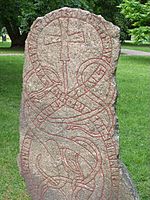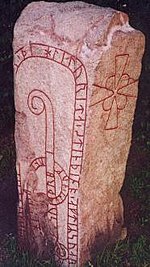University of Uppsala Botanical Garden
Botanical gardens of Uppsala University

The University of Uppsala Botanical Garden (in Swedish Botaniska trädgården), near Uppsala Castle, is the principal botanical garden belonging to Uppsala University. It was created on land donated to the university in 1787 by Sweden's King Gustav III, who also laid the cornerstone of Linneanum, its orangery. Uppsala University also maintains two satellite botanical gardens. The older of these is its original botanical garden, created in 1655 by Olaus Rudbeck, now called the Linnaean Garden (in Swedish Linnéträdgården). The other satellite is Linnaeus Hammarby (Linnés Hammarby), the former summer home of Carl Linnaeus and his family.
Excerpt from the Wikipedia article University of Uppsala Botanical Garden (License: CC BY-SA 3.0, Authors, Images).University of Uppsala Botanical Garden
Thunbergsvägen, Uppsala Kåbo
Geographical coordinates (GPS) Address Nearby Places Show on map
Geographical coordinates (GPS)
| Latitude | Longitude |
|---|---|
| N 59.8525 ° | E 17.629166666667 ° |
Address
Thunbergsvägen
752 36 Uppsala, Kåbo
Sweden
Open on Google Maps









